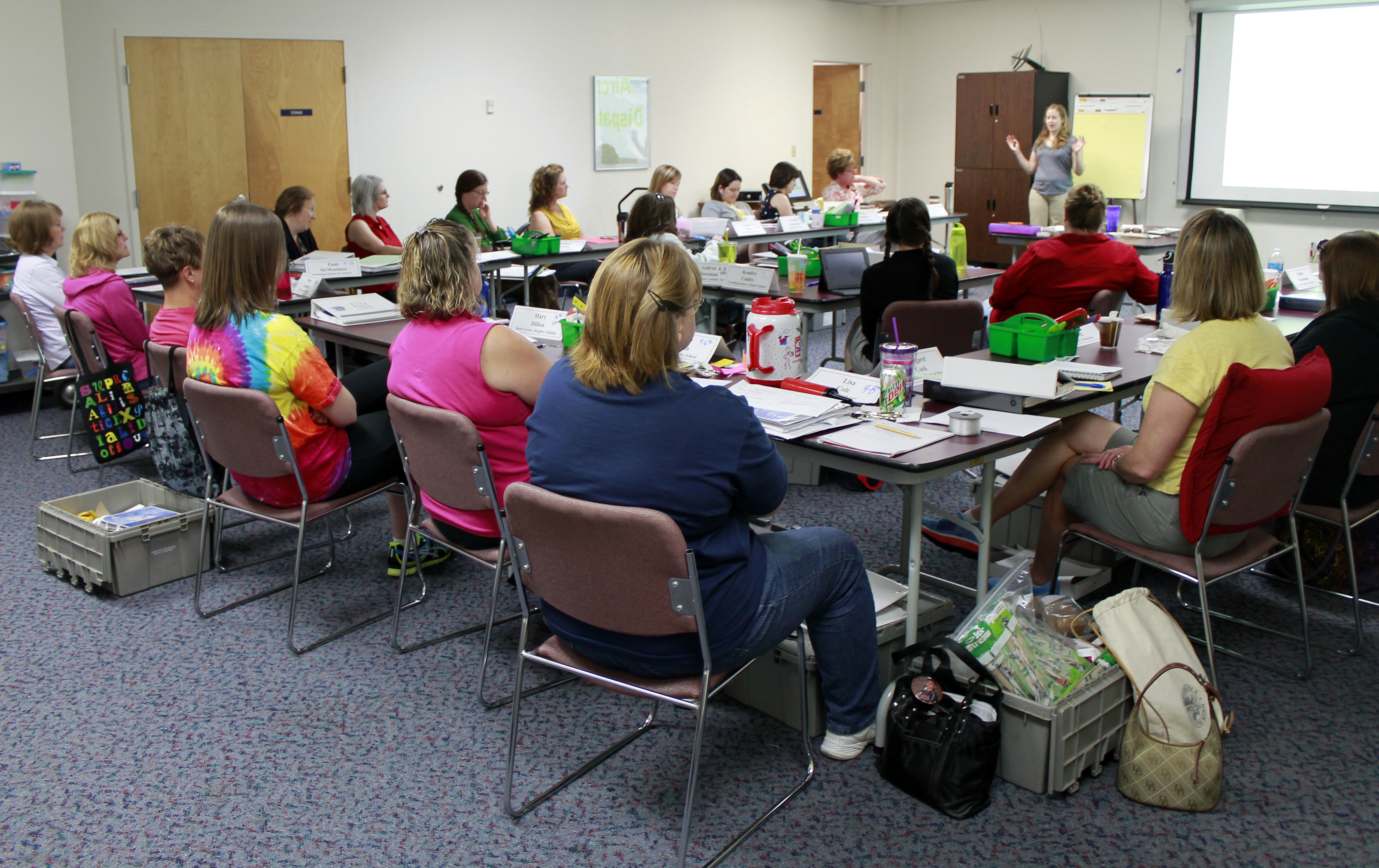The MN Space Grant program allowed the Minnesota Department of Transportation – Office of Aeronautics to offer teachers, grades K-12, a chance to learn how to incorporate aviation and aerospace into their classrooms.
The Aerospace Teacher Workshop was held for four days during the month of June. Teachers from around the state have participated in these workshops. Mankato, Eagan, Montevideo, Woodbury, Hanksa, Isanti, Brooten, St. Paul, Minneapolis, Pine City, Owatonna, Chanhassen, Bemidji, Northfield, Willmar, and Cloquet are some of the cities that have teachers bringing great hands-on activities to their students.
Day 1 was filled with presentations and hands-on activities including the history of flight, basic aerodynamics, weather, geography, and navigation, taught by MnDOT Aeronautics staff. A retired aerospace teacher then introduced the invention of flight and the Science of Flight Kit that each participating teacher would receive – free of charge.
Day 2 was filled with practical applications using the Science of Flight Kit giving the teachers the tools they need to engage the students back in their classrooms. The afternoon included a field trip to the Downtown St. Paul Airport. The teachers were able to climb to the top of the air traffic control tower that overlooks the airport and listen to communications between controllers and pilots taking off and landing at the airport. When business aircraft arrive at airports, they have special terminals to take care of them. These special terminals are called fixed base operations, or FBOs for short. FBOs are made up of three different primary parts. The first part of an FBO is the hangar which is like a garage for a car. It is large enough to hold several aircraft or helicopters when they are not flying. The second part of an FBO is the ramp which is a parking lot for aircraft. The last part of an FBO is the terminal where passengers and crew members can read, watch TV, relax, or focus on their next flight. The final stop for the afternoon was the Army National Guard Aviation Facility. Here the teachers were able to sit aboard helicopters, use night vision goggles, and visualize flying in on a mission.
Day 3 included a field trip to the University of Minnesota’s Aerospace Engineering and Mechanics (AEM) Department. The teachers received a tour of their two wind tunnels and tested some wing designs. Testing tunnels are classified by the type of fluid that is used. For most low speed aircraft testing, air is moved through a “wind tunnel.” On the other hand, to visualize shock waves for high speed aircraft or to study the flow around submarines or boats, water is used as the working fluid in a “water channel.” Prof. James Flaten explained the comprehensive AEM curriculum for both undergraduate and graduate students in which students to have opportunities for hands-on learning and research, including a senior (undergraduate) capstone design project where they work as a team to design (and sometimes construct and test, depending on the project) an aircraft or spacecraft or other aerospace hardware. The teachers also saw university-student-built high-power rockets and got a lesson about the physics of rocket propulsion by riding a cold-gas-thruster-propelled hovercraft.
Day 4 was back in the classroom, learning about parts of an airplane, the airport environment, communications, space, meteorology, rocketry, propulsion (more broadly), and aviation careers.
On the fourth day of the Aerospace Teacher Workshop awarded teachers CEU’s for continuing education. The teachers also received a Science of Flight Kit that included everything that they needed for a classroom of 30 students for experiments and activities for an entire school year.
MNDOT’s Aerospace Teacher Workshop was not offering the summer of 2020, but for information about future MN Space Grant opportunities for teachers contact the MnSGC through the Contact Us page on this website.
